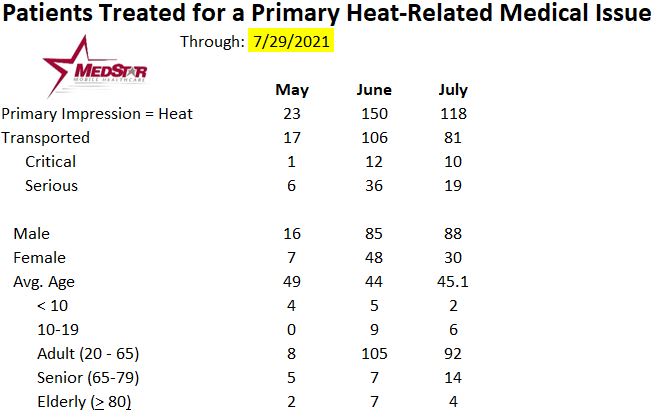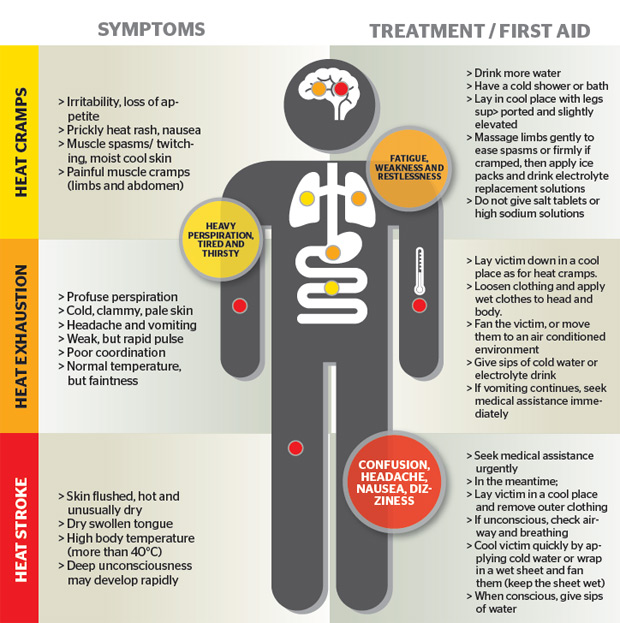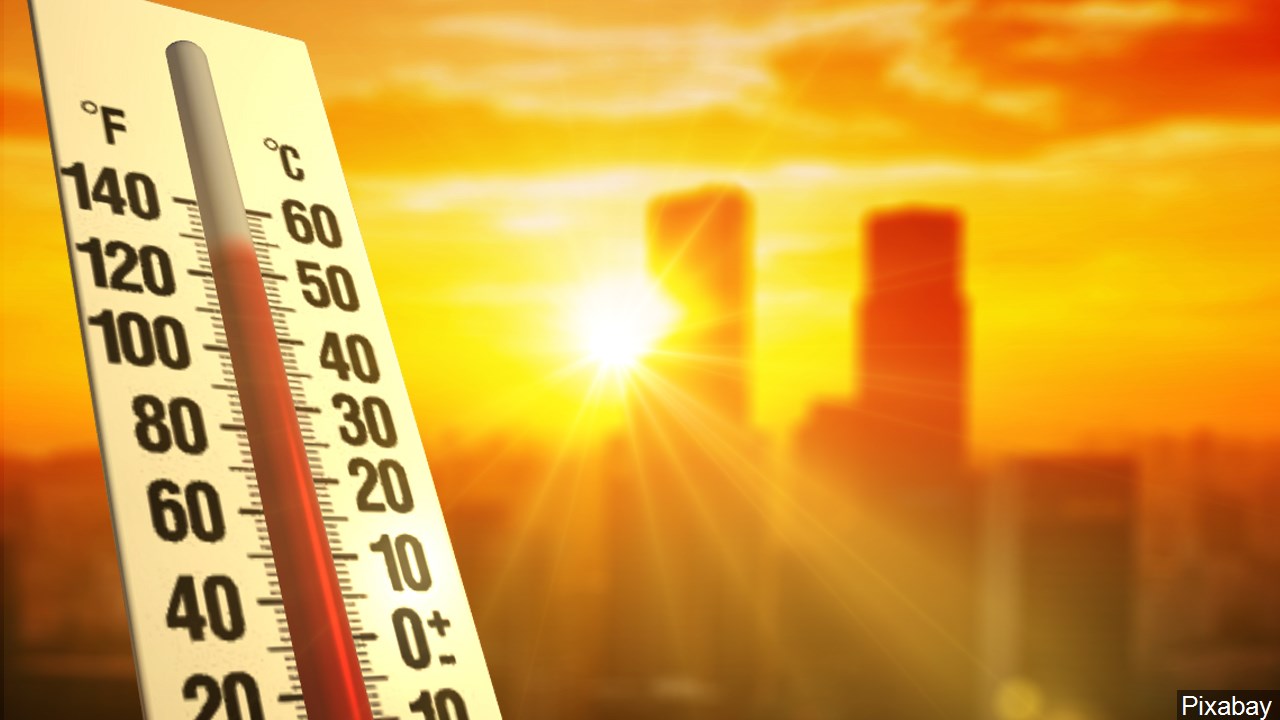The heat is on in north Texas, and we are entering our hottest weekend so far this year!
For the month of July, crews have treated 118 patients with a primary heat-related condition. 81 have required transport to the hospital, 29 patients have been serious or critical.

Hot temperatures and poor air quality is predicted to continue for the next few days, so here are some tips to stay safe as the temperatures soar in North Texas:
————————-
Summers in North Texas can be scorching, it’s a good time to remember that prolonged or intense exposure to hot temperatures can cause heat-related illnesses such as heat exhaustion and heatstroke.
Heat exhaustion occurs when the body loses large amounts of water and salt through excessive sweating, particularly through hard physical labor or exercise. This loss of essential fluids can disturb circulation and interfere with brain function. Symptoms of heat exhaustion may include muscle cramps, paleness, sweating, nausea, and vomiting. Children and the elderly are especially susceptible.
Heatstroke is a life-threatening problem that occurs when the body suffers from long, intense exposure to heat and loses its ability to cool itself. Some of the most common signs of heatstroke include confusion, vomiting, alteration in sweating, hot and flushed skin, rapid heart rate, decreased sweating, shortness of breath, decreased urination, increased body temperature (104 to 106 degrees Fahrenheit), or potentially, even convulsions.
Heatstroke is a medical emergency. If you or someone you know starts experiencing any of the symptoms above, immediately call 9-1-1.
While heatstroke and heat exhaustion are common this time of year, they can be easily prevented.
- Hydrate: Drink plenty of water during the day, especially if you are engaged in any strenuous activity. Sports drinks are a good choice if you’re exercising or working in hot conditions, but water is a good way to hydrate as well.
- Ventilate: Stay in a place where there is plenty of air circulating to keep your body cool. If you are indoors and don’t have access to air conditioning, open windows and use a fan.
- Cover Up: Wear light-colored and loose-fitting clothing to avoid absorbing the sun’s light and trapping heat. Wear a hat to shield yourself from the sun, but once you feel yourself getting warm, remove any items covering your head which can trap heat close to your body.
- Limit Activity: Heatstroke can occur in less than an hour when you are participating in strenuous activity during a hot day. If you feel yourself getting hot or light-headed, stop your activity and rest in a cool place out of the sun. Be sure to drink water or a sports drink before, during, and after any strenuous activity.
- Check on Loved One’s: The elderly are especially vulnerable to heat related emergencies. Many elderly residents are not aware of how hot it may get in their residence. Call on older friends and family members regularly to assure they are doing OK.
Kids in Hot Cars:
Texas leads the nation in child hot car deaths. Some practical tips to prevent tragedy:
- DO NOT leave children unattended in cars.
- Be sure your vehicles are secured to prevent a curious child from becoming trapped in the car on a hot day.
- If you have a car seat for a kiddo in your car, leave a stuffed animal in the car seat. When the kiddo is in the seat, put the stuffed animal in the front seat as a reminder of the kiddo in the back seat.
- Use APP enabled reminders that alarm to remind you to check for kids when you arrive at your destination.
- If you find a child unattended in a hot car, alert authorities immediately, and, if necessary, be prepared to take action based on the instructions from the 9-1-1 call taker!
-
- These recommendations are also good for your pets!!
Special Response Procedures
MedStar has a special response procedure when the Heat Index (real feel) temperature climbs to 105 degrees or higher. For patients located outside in an unprotected area, we upgrade the priority of the response to limit the patient and responders from exposure to extreme heat.
Ambulances with Texas Weather in Mind
MedStar has new ambulances in our fleet that were designed with the Texas heat in mind. The ambulances actually have three air conditioners; one for the cab, and two for the patient/crew compartment (one for the front and one for the rear of the box).







